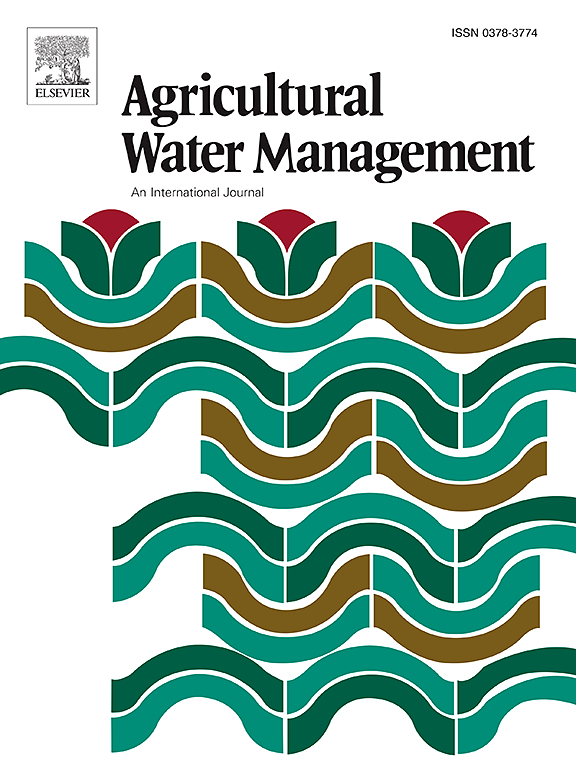太阳诱导叶绿素荧光监测指标体系的建立,提高突发性干旱预警能力
IF 6.5
1区 农林科学
Q1 AGRONOMY
引用次数: 0
摘要
近年来,突发性干旱(FD)和缓慢型干旱(SD)的相互关联日益严重,造成了长江中下游平原水-能-粮系统的重大损失。这主要是由于干旱事件的复杂性和不同的发生率,这对传统的干旱预警系统提出了严峻的挑战。因此,迫切需要开发一个能够有效预测多时间尺度干旱事件的综合预警系统。基于GLDAS-Noah土壤湿度数据,分析了2000 - 2019年长江中下游平原不同起旱率(SD、SFD和FD)干旱事件的发生频率、持续时间和空间范围。以这些已确定的干旱类型为例,我们提出了一种新的多时间尺度干旱预警系统(MSDEWS),该系统依赖于太阳诱导的叶绿素荧光快速变化指数(SIF RCI)的多度量(时间、阈值和变异性)响应。此外,我们还比较了SIF RCI与传统气象干旱指数在FD预警中的表现,强调了多源SIF数据集(CSIF、GOSIF和RTSIF)和植被类型响应敏感性对MSDEWS预报能力的影响。结果表明,监测灌丛和阔叶林SIF RCI的响应动态可显著提高FD预报的准确性。SIF RCI可提前4-5候检测FD发病信号。我们观察到SIF RCI的最小值、变异性和响应时间在不同发生率的干旱事件中存在显著差异。SIF RCI对FD的预警效果主要体现在其能够在土壤水分显著流失之前对气象干旱胁迫做出响应,与植被结构变化相比具有更高的敏感性。尽管MSDEWS的预测能力和量化阈值需要进一步研究和定位,但它在全球其他FD热点地区的应用潜力很大。利用SIF RCI的植被响应监测农业干旱,为应对日益复杂的多时间尺度干旱风险提供了新的视角和解决方案。本文章由计算机程序翻译,如有差异,请以英文原文为准。
Development of an indicator system for solar-induced chlorophyll fluorescence monitoring to enhance early warning of flash drought
In recent years, flash droughts (FD) and slow droughts (SD) have increasingly occurred interconnectedly, leading to significant losses in the water-energy-food systems of the Middle-lower Yangtze Plain. This is primarily due to the complexity of drought events with varying onset rates, which present severe challenges to traditional drought early warning systems. Therefore, developing a comprehensive early warning system capable of effectively forecasting multi-temporal scale drought events is urgently needed. In this study, we analyzed the frequency, duration, and spatial extent of drought events with different onset rates (SD, SFD, and FD) in the Middle-lower Yangtze Plain from 2000 to 2019, based on the GLDAS-Noah soil moisture dataset. Using these identified drought types as case studies, we proposed a novel multi-temporal scale drought early warning system (MSDEWS), which relies on the multi-metric (time, threshold, and variability) response of the solar-induced chlorophyll fluorescence rapid change index (SIF RCI). Furthermore, we compared the performance of SIF RCI with traditional meteorological drought indices in FD early warning, highlighting the impact of multi-source SIF datasets (CSIF, GOSIF, and RTSIF) and vegetation type response sensitivity on the MSDEWS's forecasting ability. The results demonstrate that monitoring the response dynamics of SIF RCI in shrublands and broadleaf forests significantly improves the accuracy of FD forecasts. SIF RCI can detect FD onset signals 4–5 pentads in advance. We observed significant differences in the minimum values, variability, and response times of SIF RCI across drought events with varying onset rates. The early warning effectiveness of the SIF RCI for FD is attributed to its capacity to respond to meteorological drought stress before significant soil moisture loss, offering higher sensitivity compared to changes in vegetation structure. The proposed MSDEWS shows considerable potential for application in other global FD hotspots, although its forecasting capabilities and quantification thresholds require further investigation and localization. Monitoring agricultural droughts using the vegetation response of SIF RCI provides new perspectives and solutions for addressing the increasingly complex multi-temporal-scale drought risks.
求助全文
通过发布文献求助,成功后即可免费获取论文全文。
去求助
来源期刊

Agricultural Water Management
农林科学-农艺学
CiteScore
12.10
自引率
14.90%
发文量
648
审稿时长
4.9 months
期刊介绍:
Agricultural Water Management publishes papers of international significance relating to the science, economics, and policy of agricultural water management. In all cases, manuscripts must address implications and provide insight regarding agricultural water management.
 求助内容:
求助内容: 应助结果提醒方式:
应助结果提醒方式:


